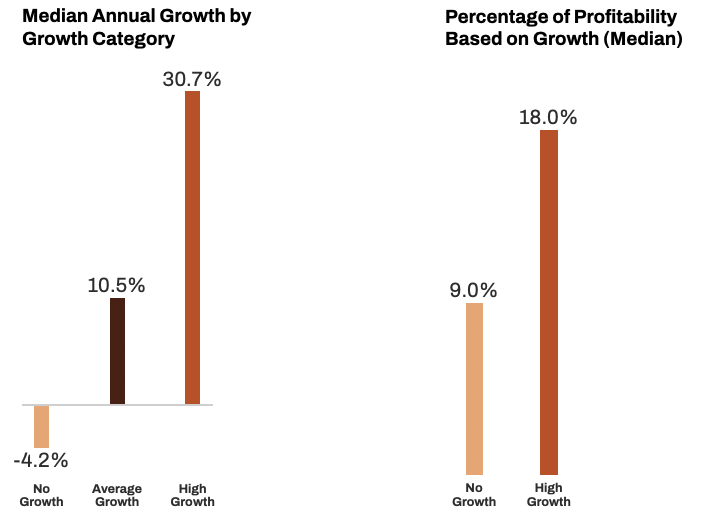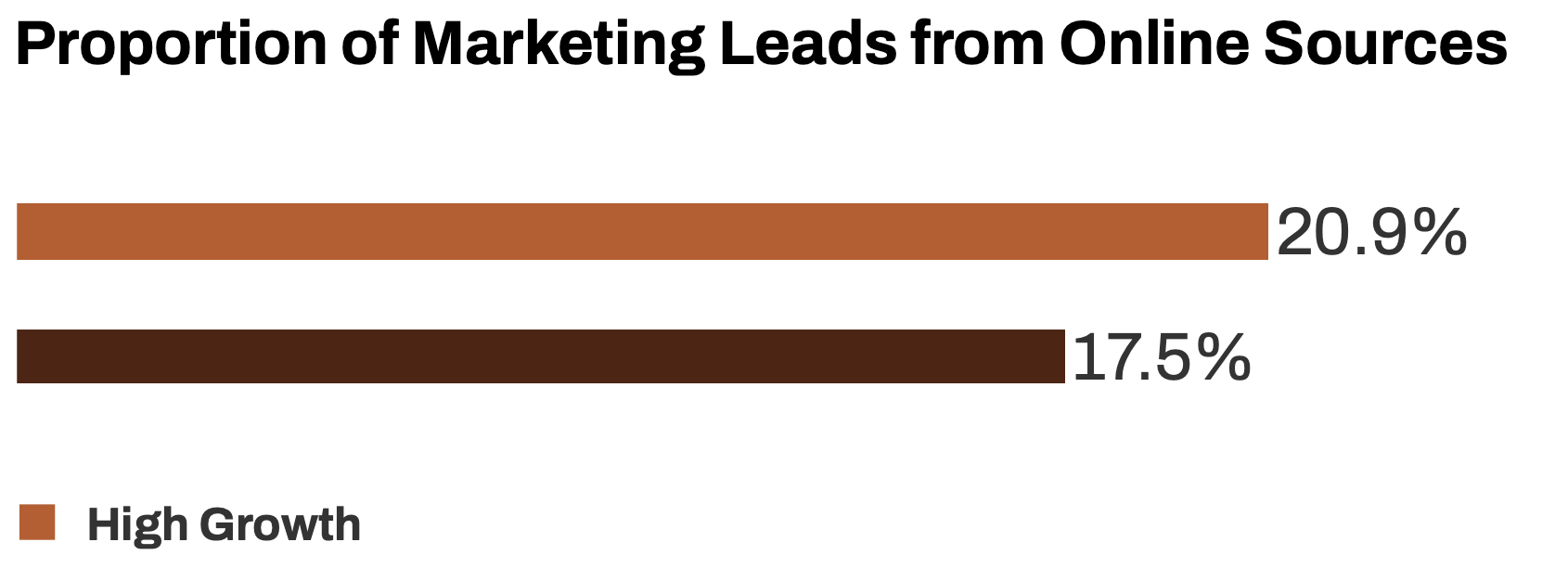Since the onset of the pandemic, the AEC marketplace has settled precariously on the sands of uncertainty. War, conflicting economic signals, a polarized political environment, and powerful but frightening AI technologies keep us guessing. At the same time, the labor pool isn’t getting any bigger, and compensation levels are rising.
But even in today’s unpredictable world, there are signs of hope: AEC firms are growing again. And there is a subset of high-performing firms—businesses that thrive in almost any environment—that can show you a way forward.
Earlier this year, we released our annual High Growth Study, including an in-depth report on the AEC industry. Today, we’d like to share some of the key findings from this industry report so that you can better understand what’s happening in the marketplace and what the best-performing firms do differently.
A Quick Word About the Study
129 architecture, engineering and construction firms participated in this ninth edition of the High Growth Study, representing $23 billion in revenue. In the figure below, you can see how the AEC industry stacks up against other professional services.

Participants represented firms of all sizes, and they conducted business in every region of the globe.
In the study, we grouped the participating firms into three categories: High Growth (see definition in the section below), No Growth (those that experienced zero or negative growth), and Average Growth (the balance of the sample).
Meet the High Growth Firms
We define High Growth firms as those firms that achieve at least 20% compound annual growth over a three-year evaluation period. We contrast these firms against those that experienced little or no growth over the same time frame. This allows us to identify strategies and practices that are associated with faster growth and higher profits.
This year’s High Growth cohort grew at a median rate of 30.7%—about three times faster than their No Growth peers.
High Growth firms are also more profitable than their slower-growing competitors. High Growth firms enjoyed a median profit of 18%—twice the level of the No Growth contingent.

Next, we look at five reasons these fast-growing firms have an advantage. Best of all, you can use these to make adjustments at your own firm.
1: Top Performers Invest (Slightly) More in Marketing
The High Growth group spends 25% more on marketing than the No Growth cohort. However, that amounts to just 5% of revenue—and seven percentage points less than we reported in last year’s study. Nevertheless, the clear takeaway is that these firms are able to do more with less. Let’s find out how.
2: They Know Which Marketing Techniques Work
Below is a list of the top-five marketing techniques used by High Growth AEC firms. The first thing that struck us was how conventional most of these marketing techniques are compared to other expertise-based industries in the overall study. In fact, the AEC industry relies on traditional, face-to-face networking more than any other segment—and it is the most frequently used technique of the High Growth cohort. Two of the other four items on this list also pertain to live events: sponsorships and physical branded materials. Only networking on social media is a digital technique, though it is arguably an online equivalent of in-person networking.
These are the techniques that High Growth firms rely on most often, and they produce results. In the next section, we get a glimpse into how their priorities may be evolving.

(Note: for the complete list, as well as a list of the techniques that deliver the greatest impact, see the full report.)
3: They Plan to Invest in Creating Content this Year
High Growth firms never rest on their laurels. They are always trying new things, testing different techniques and planning for the future. In the list below, we see what these firms are planning to invest in this year. Topping the chart is creating content. Content is a proven way to attract new prospects (for instance, by writing SEO-optimized blog posts), demonstrate your expertise (by writing and speaking about issues your buyers care about) and convert website visitors into leads (by putting valuable content behind a web form and promoting it in relevant places).

4: They Are More Likely to Conduct Research
The top-performing firms are more likely than their No Growth counterparts to conduct research (see figure below). They are also much more likely to do it more often.
Research is valuable for a number of reasons. It provides fresh market intelligence that most competitors don’t have. This information allows you to adjust to changing conditions faster and see emerging opportunities sooner. It also provides valuable insights you can use in your thought leadership—think blog posts, speeches, and webinars—and to position your firm as truly understanding your audience and it’s business challenges.

5: They Get More Digital Leads
Back in #2 above we discussed how High Growth AEC firms prioritize traditional marketing techniques over more modern ones. In fact, of all the industries in this year’s study, the AEC industry comes in dead last when it comes to acquiring leads from digital sources. However, High Growth firms get over a fifth of their leads online—about 20% more than average firms (see figure below).
If you are getting less than 20% of your leads from online sources, look to the High Growth for inspiration.

What Next?
While there are signals that the AEC industry is regaining its footing after a period of instability, many firms are still underperforming or unsure where to invest their limited marketing dollars. We designed the High Growth study to help.
One place to start is with the High Growth firms’ top marketing priorities for 2024 (see #3 above), as well as the techniques they use most often (#2 above). The entire industry is slow to adapt to changing buyer behaviors, so you may want to invest in more modern digital techniques, as well (again, #3 above can help).
You can also purchase the full AEC report, which includes a far more detailed look at High Growth firms’ marketing and business development tools, techniques and priorities.
Today’s top-performing firms are wrestling with many of the same issues as the rest of the industry, yet they are growing three times faster than average. They are also twice as profitable. Equipped with insights into how these organizations sustain a competitive advantage year after year, you can begin adopting their habits—and begin enjoying some of their success.


